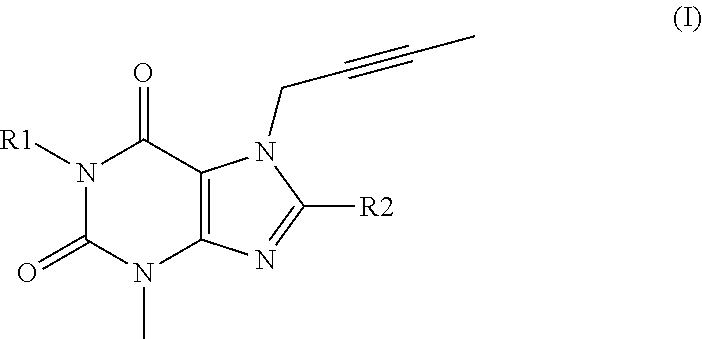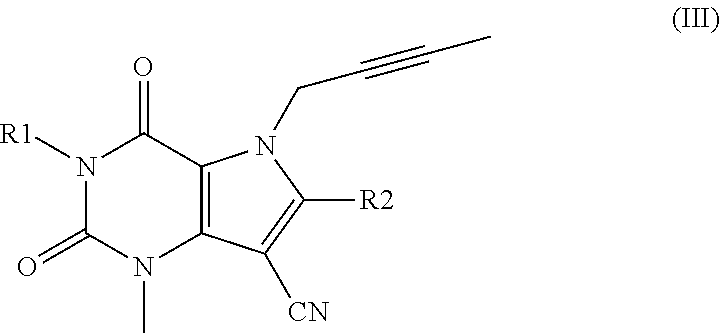Cardio- and renoprotective antidiabetic therapy
a renoprotective and anti-diabetic technology, applied in the direction of drug compositions, peptide/protein ingredients, metabolic disorders, etc., can solve the problems of two to five fold increase in cardiovascular disease risk, significant reduction of life expectancy, and high secondary failure rate, so as to reduce the risk of and/or delay the occurrence, and reduce the risk of ldl cholesterol blood levels
- Summary
- Abstract
- Description
- Claims
- Application Information
AI Technical Summary
Benefits of technology
Problems solved by technology
Method used
Image
Examples
examples
[0385]In order that this invention be more fully understood, the herein-given examples are set forth. Further embodiments, features or aspects of the present invention may become apparent from the examples. The examples serve to illustrate, by way of example, the principles of the invention without restricting it.
Treatment of Patients with Type 2 Diabetes Mellitus at High Cardiovascular and Renal Microvascular Risk:
[0386]The long term impact on cardiovascular and renal (microvascular) safety, morbidity and / or mortality and relevant efficacy parameters (e.g. HbA1c, fasting plasma glucose, treatment sustainability) of treatment with linagliptin in a relevant population of patients with type 2 diabetes mellitus (such as e.g. at high vascular risk) can be investigated as follows:
[0387]Type 2 diabetes patient with insufficient glycemic control (naïve or pre-treated with any antidiabetic background medication, excluding treatment with GLP-1 receptor agonists, DPP-4 inhibitors or SGLT-2 in...
PUM
| Property | Measurement | Unit |
|---|---|---|
| Density | aaaaa | aaaaa |
| Volumetric flow rate | aaaaa | aaaaa |
| Dimensionless property | aaaaa | aaaaa |
Abstract
Description
Claims
Application Information
 Login to View More
Login to View More - R&D
- Intellectual Property
- Life Sciences
- Materials
- Tech Scout
- Unparalleled Data Quality
- Higher Quality Content
- 60% Fewer Hallucinations
Browse by: Latest US Patents, China's latest patents, Technical Efficacy Thesaurus, Application Domain, Technology Topic, Popular Technical Reports.
© 2025 PatSnap. All rights reserved.Legal|Privacy policy|Modern Slavery Act Transparency Statement|Sitemap|About US| Contact US: help@patsnap.com



